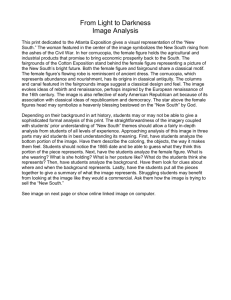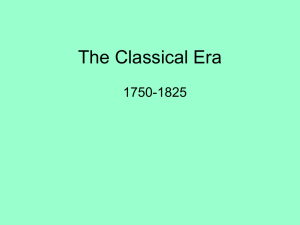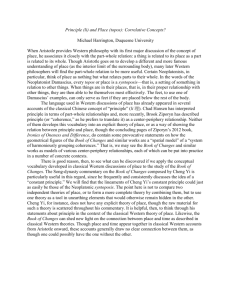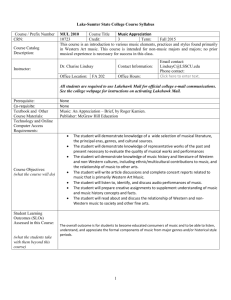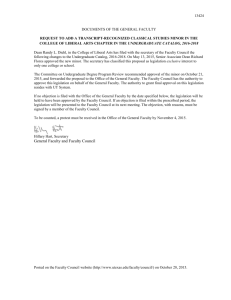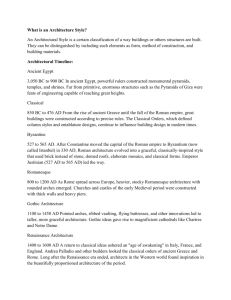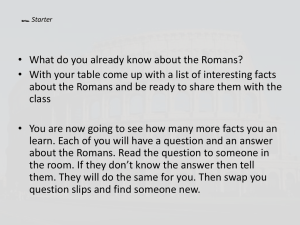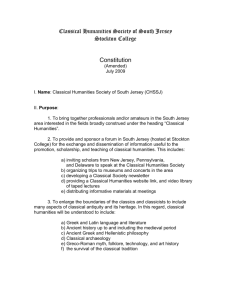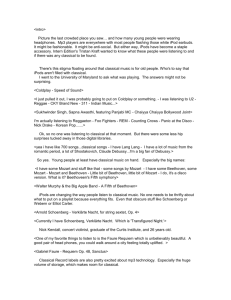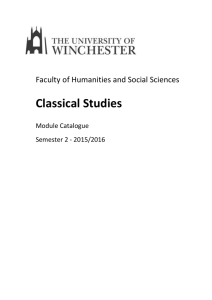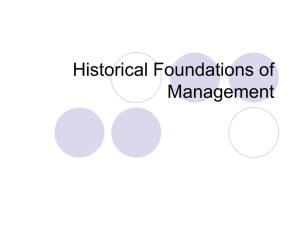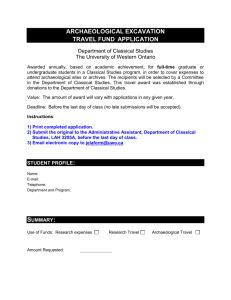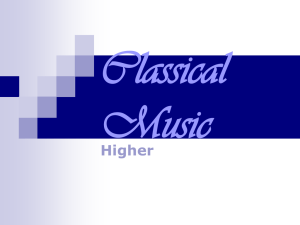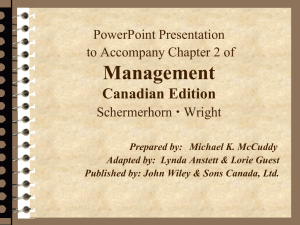Classical Period
advertisement
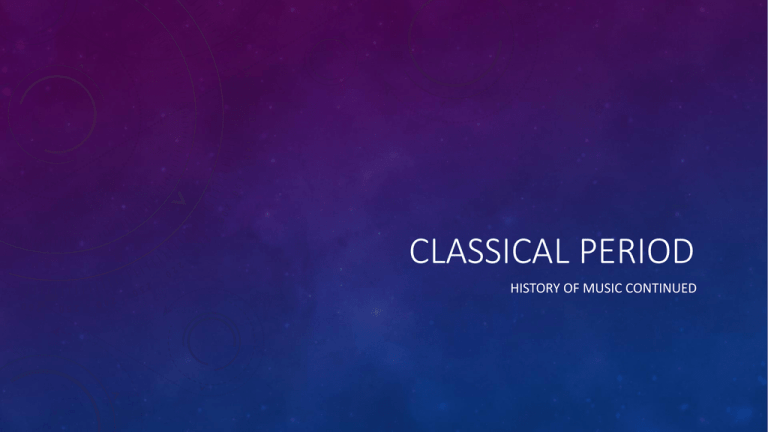
CLASSICAL PERIOD HISTORY OF MUSIC CONTINUED CLASSICAL PERIOD OF MUSIC: OVERVIEW The classical period occurred after the Baroque period, from 1775-1825. The term “classical” refers to the art and heritage of Greece and Rome. Vienna, Austria was the “hub” of musical progress during this period. 18 CENTURY ART Johann Zoffany WHAT ELSE WAS GOING ON IN THE WORLD? • More thinking, and problem solving, specifically the problems of poverty and epidemic. • Europe’s population was growing rapidly. • Beginning of the first Industrial Revolution. LET’S LISTEN! • What musical characteristics do you hear? MUSICAL CHARACTERISTICS OF THE CLASSICAL PERIOD • Homophonic texture (clear melody with chord accompaniment) • Balanced and symmetrical • Light, but with driving rhythm and pulse • Use of crescendo and diminuendo • Scale passages • Composers: Haydn, Mozart, early Beethoven LET’S COMPARE BAROQUE TO CLASSICAL! Baroque Classical • Figured Bass • No figured bass. Parts were written out. • Loud and Soft • Use of crescendo and diminuendo. • Performed for royalty or in sacred settings. • Music performed for audiences. • Harpsichord used often. • Use of piano, but not usually in large ensembles. • Concerti, Concerti grossi. • Sonata Allegro form, Rondo form. • What else? • What else? HOMEWORK ASSIGNMENT! • Research classical music and discover one of the following: • Classical composer • Characteristic of classical music • Similarity between classical music and other areas such as art or architecture • Type of composition written in classical time • Write down your research, cite the source of your research, and turn in next class!





